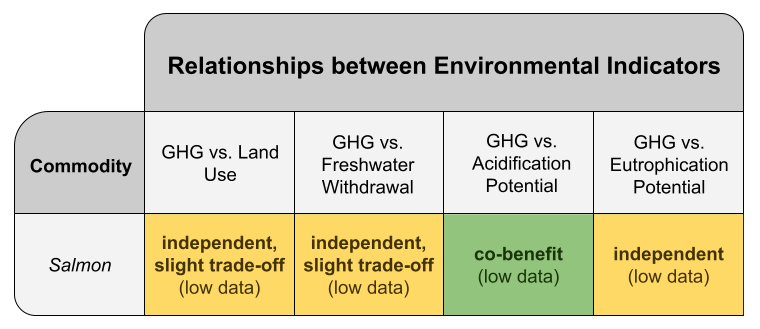
Salmon aquaculture, the fastest-growing food production system worldwide, is at a crucial stage where understanding its environmental effects is key. As salmon moves onto more and more people’s plates, a careful eye on responsible production methods is needed in order to curb its environmental footprint.
Overall, points for improvement surface overwhelmingly in the feed stage, especially in the inclusion of animal by-products. However, concerns about waste arise in the efficiency of shifting these compositions as much of salmon feed is made of by-products of other commodities, and ratios often are adjusted based on by-product availability. Further concerns arise as shifting towards a crop-based diet may increase the amount of feed needed, possibly inflating impacts.
Thus, our next steps include looking further into the feasibility of changing feed compositions and more research on salmon feed, as well as further research into the more concerning initial data that suggests a potential inverse relationship of GHG emissions versus land use and freshwater withdrawal. Aggregation of more data points outside of solely GHG emission levels is also high priority in order to allow us to further explore and confirm trends observed.

